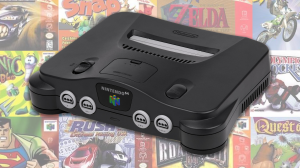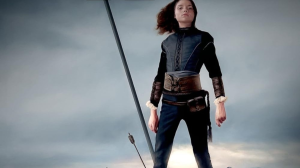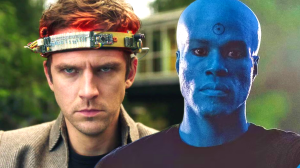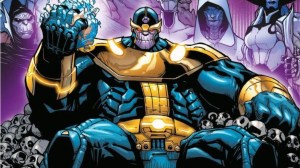Sixteen years ago, one game burst onto the scene with a mix of elegance, chaos, and confidence that few titles have since replicated. Action games at the time were predominantly led by male protagonists, but PlatinumGames made a bold decision to give players a female lead. And it worked. Its combat was balletic violence; its tone was irreverent and stylish; and its leading woman was unforgettable. She competed with the likes of Dante from Devil May Cry, Kratos from God of War, and Ryu Hayabusa from Ninja Gaiden and set a benchmark for female protagonists going forward.
Videos by ComicBook.com
Bayonetta was first released 16 years ago on October 29th, 2009, and it redefined the action genre entirely. Critics praised Bayonetta’s design, complimenting its fashionable, strong, sexy, and modern design. I’m not too proud to admit I had a crush on Bayonetta the first time I booted it up and saw the Umbra Witch in full stride. The over-the-top story and action drew me in, whereas I’d bounced off Devil May Cry. PlatinumGames had struck gold with Bayonetta, so much so that Nintendo scooped it up despite its mature themes.
Bayonetta Proved That Strength and Style Could Coexist

Before Bayonetta, female heroes in action games often fell into two narrow lanes: the stoic warrior molded after her male counterparts, or the femme fatale built for the gaze rather than the game. Bayonetta broke that binary. She was fast, flamboyant, and unashamedly feminine in a genre that often shied away from overt sensuality. It made being strong and sexy not just acceptable but aspirational. And it gave us a female protagonist who could outwit, outfight, and outpose anyone who dared share her screen.
Her iconic weapons, Scarborough Fair, were reminiscent of Dante’s arsenal, but gave her a unique aesthetic. Bayonetta strutted into battle with six-inch heels, complete with pistols, firing bullets with every melee strike. She summoned demons and used her hair to strike down demons and angels alike. Every move and word from Bayonetta oozed confidence and style, and she wasn’t afraid to flaunt what she had.
Her power wasn’t just physical; it was theatrical. Every move, every taunt, every pose was deliberate, turning the genre’s button-mashing gameplay into a performance. I memorized combos to perform her most flashy attacks and perfected dodging so I could activate Witch Time, causing those around me to move in slow motion while I pummeled them.
To this day, I see Bayonetta’s influence across gaming. 2B from Nier Automata, Eve from Stellar Blade, and so many more take inspiration in their design and attitudes from this witch. Her design evolved, my personal favorite being her new look in Bayonetta 2, showing she could adapt with the gaming industry. To this day, she remains one of the strongest female leads in gaming, and for good reason.
No One Moves, Fights, or Flirts Like Bayonetta, and No One Ever Will

What made Bayonetta so beloved wasn’t just her design or her power; it was her attitude. She could flirt mid-fight or crack jokes while facing down celestial horrors, all while still feeling completely in control. Her sexuality wasn’t a weakness or fan service (okay, maybe a little); it was pure confidence. Bayonetta flirted because she could, not because she had to. That blend of combat and charisma made her a rare kind of protagonist. It worked for me, whereas Dante’s similar style felt cringey.
Bayonetta talked through combat, teased her enemies, and even made me blush now and then. It didn’t matter if she was slinging bullets or words; Bayonetta dictated the pace throughout combat, forcing the world to obey her rules and match her rhythm. This perfectly matched the ridiculous action sequences: one minute, I could be running along a giant angelic being with two dragon heads to reach a weak point, and the next, I summoned a demonic iron maiden to crush several enemies at once.
For me, Bayonetta wasn’t just a character; she was an attitude shift. When I first played her, I didn’t just see a cool witch in heels. She embraced the freedom to be what she wanted. We’ve had action games come after her, but none have managed to impress me the way she did. The combat was peak for me, something that improved with each game, and her design was always classy, flamboyant, and appealing in ways that managed to work when they shouldn’t have.
Bayonetta’s Gameplay Ascended While Its Story Declined

If there is one bittersweet truth about Bayonetta, it’s that the gameplay is incredible while the story is lackluster for the most part. The first game was tight, witty, and self-aware, but ultimately wasn’t anything special narratively. The core concept was solid, after all, who didn’t love fighting the bizarre angels and demons with Umbral Witch powers? But it mainly felt like a vehicle to deliver the smooth and explosive combat the series is known for.
Then, Bayonetta 2 polished the gameplay further. It was flashier, more explosive, and introduced new ideas and mechanics. Her new look is my favorite throughout the series, and it emphasizes the new aspects of the game. The story felt similar, but expanded in new, interesting ways. If you ask any fan, there is a good chance they’ll say that Bayonetta 2 is the best game in the trilogy. Which brings us to Bayonetta 3, the weak link in the series’ narrative.
While the gameplay is some of the best in the series, Bayonetta 3’s story is its worst, not taking into account the voice acting controversy. Viola felt like an odd inclusion; the multidimensional Bayonettas just didn’t fit. But the worst was the romance plot between Bayonetta and Luka. While there had always been a connection and flirting between the two, it felt more forced, especially considering Viola was their daughter from an alternate universe. Like many other fans, I always saw Bayonetta and Luka as friends rather than romantic interests, as the two just seemed so wildly different.
Despite this narrative misstep, the game features incredible set pieces and some of the series’ most fun battles. The story disappointed me, but I couldn’t wait to jump back into levels to get a higher score because of how fun and sharp the combat is. While it seems the main games may be done for now, Bayonetta lives on in spin-offs like Bayonetta Origins: Cereza and the Lost Demon and Super Smash Bros. Ultimate. I hope we get another game, not just for the engaging combat, but to see Bayonetta continue her legacy.
What do you think? Leave a comment below and join the conversation now in the ComicBook Forum!









